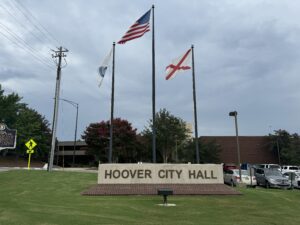Lt. Governor Will Ainsworth’s appointments: Agriculture and Natural Resources related (January 2019 – July 2019)

We are please to present Lt. Governor Will Ainsworth’s agriculture and natural resources related appointments from January to July. Additional appointments in judicial and criminal justice, education and child welfare, It/infrastructure and healthcare are to follow. Alabama Forever Wild Land Trust Board (Made January 23) · Dr. Salem Saloom Alabama Onsite Wastewater Board (Made January 29) · Dr. Kevin White · Michael Dansby Energy Council · Senator Steve Livingston (Made February 08) · Senator Randy Price (Made February 08) · Senator Clay Scofield (Made February 08) · Senator David Sessions (Made February 08) · Senator Jack Williams (Made May 07) · Senator Bill Beasley (Made May 07) Joint Legislative Committee on State Parks (Made February 12) · Senator Andrew Jones · Senator Bill Beasley Southern States Energy Board (Made February 19) · Senator Tom Whatley Alabama Permanent Joint Legislative Committee on Water Policy and Management (Made February 20) · Senator Andrew Jones · Senator Bill Beasley Permanent Joint Legislative Committee on Energy Policy (Made February 20) · Senator David Sessions Alabama Water Resources Commission (Made March 04) · Steve Forehand · Bill Henderson Nuclear Energy Activities and Hazardous Chemical Toxic Waste Oversight Committee (Made March 20) · Senator Jabo Waggoner · Senator Bobby Singleton · Senator Steve Livingston Alabama Trails Commission (Made March 11) · Senator Cam Ward · Senator Clay Scofield Chemical Testing Training and Equipment Trust Fund Advisory Board (Made April 03) · Senator Tom Whatley Alabama Agricultural and Conservation Development Commission (Made April 11) · Senator Clay Schofield · Senator Greg Albritton Alabama Oil and Gas Study Committee (Made April 24) · Senator Greg Albritton · Senator Chris Elliot · Senator Greg Reed
Governor Kay Ivey’s appointments: Agriculture and Natural Resources related (Jan. – April 2019)
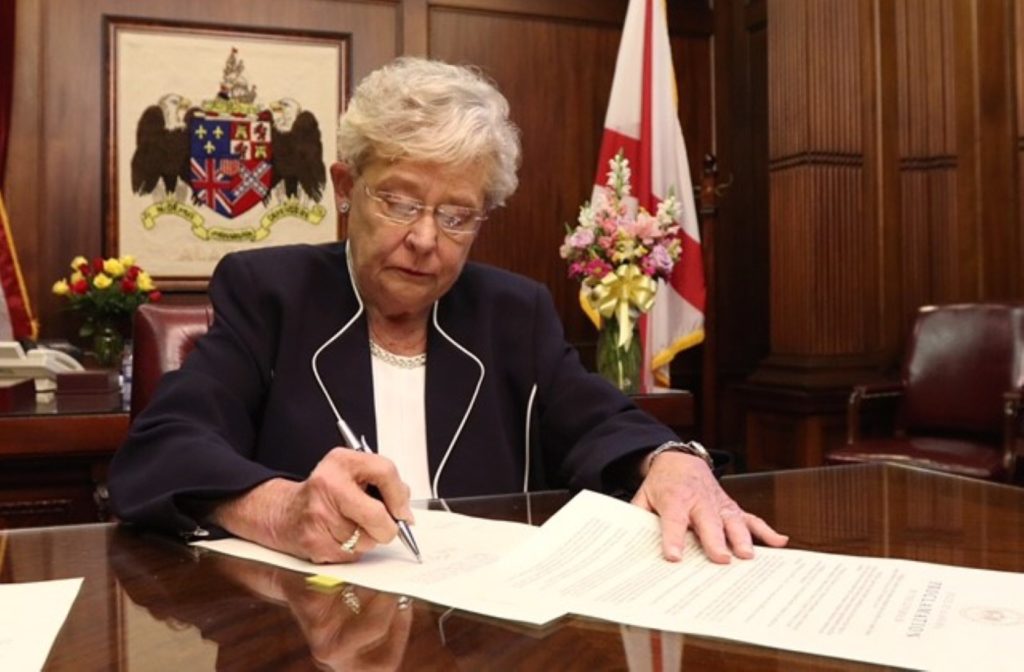
As a part of our ongoing efforts to catch up on appointments we are pleased to present Governor Kay Ivey’s Agriculture/Resources appointments from January to April. If you missed the others you can find the education appointments here, healthcare related ones here, and our latest post on judicial and criminal boards and commissions here. Please check back for additional appointments. Information on open board positions is on the appointments webpage. Board of Registration for Foresters (Made January 11) Victoria Lockhart Southern States Energy (Made January 31) Senator Clyde Chambliss Liquefied Petroleum Gas (Made January 31) Dickie Ferguson Agriculture and Conservation Development Commission (Made February 26) Dr. Carol Knight Patty Lambrecht Sue Gaines Rick Oates Water Resource Commission (Made February 26) Phillip Saunders Senator Melson Sam Givhan Kathy Horne Thomas Adams Patty Lambrecht Gulf States Marine Fisheries Commission (Made March 13) Chris Nelson Agriculture and Industries (Made March 13) Carnell McAlpine Franke Speake Willis Floyd Cook, Jr. Hezekiah Early, Jr. Dr. William Powell, III Joseph Harris Dennis Maze Elk River Development Agency Board of Directors (Made March 13) Mark Johnson Mayor Tracy Compton Mayor Richard Herston Board of Examiners of Mine Personnel(Made March 27) Harold Sickles, Jr. Red Mountain Greenway and Recreational Area Commission(Made March 27) Former Representative Paul John DeMarco Armand DeKeyser Tennessee Tombigbee Waterway Development Authority(Made March 27) Martha Stokes James Lewis Baker Allen Donald Waldon Horace Horn Anna Lure McKibbens State Forestry Commission(Made April 12) Jane Trotter Russell Robert Sharp
Jimmy Parnell: Agriculture research funding needed
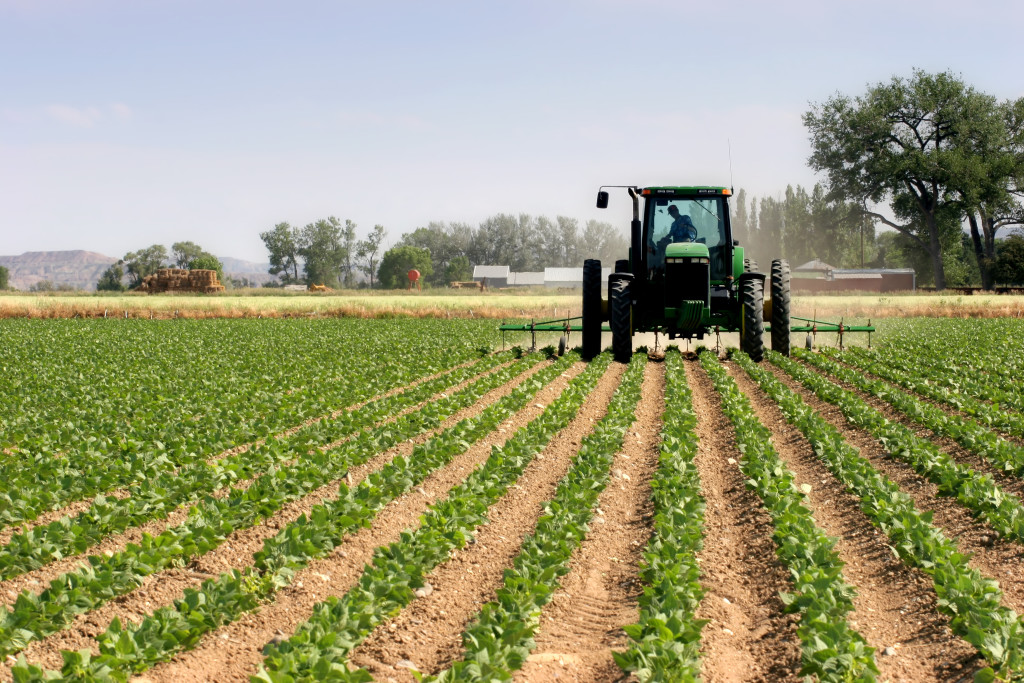
American agriculture has long been the envy of the world. Thanks to investment in plant and animal breeding, pest management, conservation and automation, U.S. farmers have more than doubled productivity since 1980, while reducing erosion and protecting the environment. If America is to remain a farming superpower, we must strengthen research efforts at our colleges and universities. That’s why Alabama Farmers Federation is calling on Congress to increase support for the National Institute of Food and Agriculture (NIFA). Since 1921, the Farmers Federation has worked to build public support for agriculture and forestry. Securing funding for research at Alabama’s land grant universities was an early focus of the organization, and it remains a priority today. Each year, farmers set aside a portion of their harvest revenue to fund education, promotion and research through checkoff programs. Over the years, these voluntary efforts have provided millions of dollars to Auburn University and other research institutions. Likewise, private companies leverage the intelligence and innovation at our universities to develop new products and technologies. Still, public investment is needed to ensure American agriculture and forestry remain globally competitive. Alabama’s Congressional delegation has been supportive of agriculture and forestry research. But in recent years, Brazil and China have outpaced America’s commitment to food and agricultural research. In fact, China is now investing twice as much as the U.S. on potentially groundbreaking research to help farmers feed, clothe and shelter a growing world. NIFA provides a vehicle for coordinating research that can have immediate impact on the agriculture and forestry industries. In one example, over $18 million in competitive grants through NIFA’s Agriculture and Food Research Initiative (AFRI) program have been awarded to research projects at Auburn University, Alabama A&M University, Tuskegee University and other state institutions. These AFRI grants, under NIFA, have allowed researchers to discover new ways for farmers to prevent infectious diseases that threaten farm animals; developed strategies to ward off pests that could affect soybean production; and helped farmers embrace data to increase profitability. h The Farmers Federation was founded in the decades following the passage of federal laws establishing land grant universities and Cooperative Extension Systems. Our country’s investment in the threefold land grant mission of instruction, research and outreach had a direct impact on the growth of productive and sustainable agricultural and forestry practices. By pairing the scientific curiosity and initiative of researchers with the innovation and hard work of farmers, America became the world leader in agriculture. Our farmers learned to produce more food and fiber with fewer inputs. We developed conservation practices to reduce erosion and create habitat for wildlife. Families were given access to a greater variety of high-quality, nutritious food. And, we were able to export much of this technology to help poor and impoverished people around the world. If the U.S. is to remain the leader in agriculture, we must invest in the future. Alabama’s 40,000 farms generate $70 billion in economic impact and create one in every five jobs. These men and women possess the work ethic, ingenuity and dedication to take agriculture and forestry to the next level. They are investing their own hard-earned money in research. We ask Congress to join us in keeping American agriculture the envy of the world. Jimmy Parnell is the President, CEO and Chairman of the Board of the Alabama Farmers Federation.
Martha Roby: Congress delivers the 2018 Farm Bill
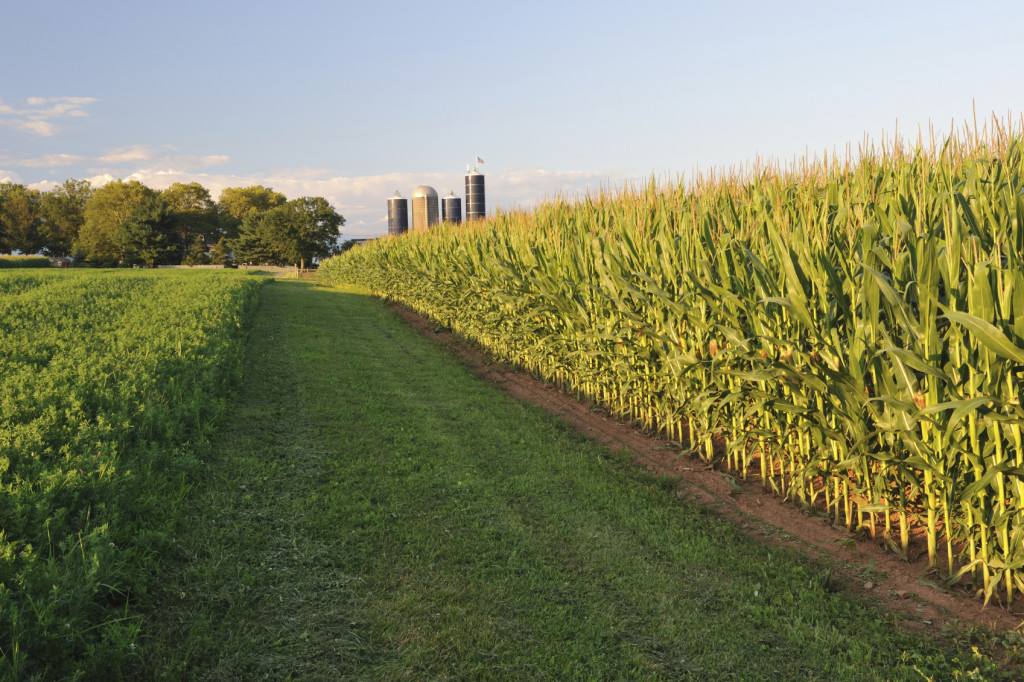
Agriculture is the largest revenue-producing industry in the State of Alabama, responsible for more than $70 billion in economic impact annually. Our state is a national leader in food production and a global competitor in the livestock, peanut, cotton, poultry, timber, and catfish industries. In Alabama’s Second District, agriculture is the largest employer, responsible for more than 93,000 jobs. Agriculture is at the core of countless issues that impact the Second District and our state as a whole. Throughout my time in Congress, I have been proud to serve as a strong voice for our farmers of all commodities and to ensure that we craft smart agriculture policy that they can rely on in their important work. It is imperative that Congress honor our commitments to the hardworking farmers and producers across the country. That’s why I am glad to report that both the House and Senate have approved the 2018 farm bill. This legislation now heads to the White House where it awaits President Trump’s signature. The 2018 farm bill provides certainty to the American families who work every day to provide the food and fiber we all depend on. I was proud to support it on behalf of our Second District farmers. The 2018 farm bill includes key wins for farmers and our rural communities. It improves farm policy by providing a nationwide yield update for the Price Loss Coverage (PLC) commodity program, beginning with the 2020 crop year and allowing PLC to better respond to market conditions; making several key improvements to the Agriculture Risk Coverage (ARC) commodity program, including increased yield plugs and yield trend adjustments; protecting and improving crop insurance; investing in research, extension, and education projects, and protecting farmers from additional costly, burdensome red tape. The bill also lays the groundwork for an improved Supplemental Nutrition Assistance Program (SNAP) by preserving the Trump Administration’s flexibility to rein in SNAP work requirement waivers for able bodied adults without dependents. We are focused on improving welfare integrity by encouraging able-bodied Americans to work rather than enabling dependency on the federal government. Additionally, the 2018 farm bill dedicates funding to rural health projects to help Americans battling opioid addiction and other substance abuse disorders. It’s no secret that the opioid epidemic is gripping our state and the entire country, so it is imperative that we utilize every tool available to combat it. I’m especially proud this legislation allocates increased resources to that end. Importantly for Alabama’s Second District, the farm bill also makes significant improvements to rural broadband delivery. This includes the implementation of forward-looking standards to ensure we are meeting the next generation’s rural broadband needs. This farm bill makes good on our commitment to farmers, producers, and all of rural America by providing certainty moving forward. My goal with agriculture policy is always to create a responsible framework of laws and programs that promote a sustainable and profitable agriculture industry in Alabama while allowing our farmers to do what they do best: provide the sustenance that feeds our state, our country, and the world. I am proud of Congress’ action to make this happen, and I’m eager to see President Trump push the farm bill over the finish line. … Martha Roby represents Alabama’s Second Congressional District. She lives in Montgomery, Alabama, with her husband Riley and their two children.
Compromise Farm Bill passes Senate with support of Richard Shelby, Doug Jones

The compromise Farm Bill sailed to passage in the U.S. Senate on Tuesday by a bipartisan vote of 87 to 13, with the support of both Alabama U.S. Sen. Richard Shelby and Doug Jones, less than 24 hours after it being released to the public. The final bill reflects a hard-fought bipartisan, bicameral agreement on a five-year farm bill to strengthen the diversity of American agriculture and support the 16 million jobs that power the food and farm economy. “This bipartisan legislation provides much-needed predictability that will significantly benefit our state’s farmers and the entire agriculture industry,” said Shelby. “I look forward to the lasting positive impact this bill with have on rural areas throughout Alabama and the nation.” “This is a Farm Bill for rural Alabama and rural America,” said Jones. “I’m proud that the final legislation ensures that our farmers have the support and resources they need to continue to do their important work. It also addresses several urgent issues for our state, particularly the need for expanded rural health care and broadband access. Since I arrived in the Senate in January, I’ve worked closely with my colleagues on both sides of the aisle, as well as farmers from across Alabama, to advocate for a strong Farm Bill for all of our rural communities. This bill reflects the priorities we share for a brighter and more secure future for Alabama.” Agriculture is Alabama’s top revenue producing industry, generating an annual impact of over $70 billion. With over nine million acres of farmland and more than 48,500 farms, the state is a national leader in food production and a global competitor in the poultry, catfish, timber, cotton, and livestock industries. The bill now moves to the House for final consideration. 2018 Farm Bill Overview* The Agriculture Improvement Act of 2018, also known as the 2018 Farm Bill, strengthens the diversity of American agriculture, supporting the 16 million jobs at the root of our farm and food economy. The impact of the Farm Bill reaches both on and off the farm by growing opportunities for our farmers, protecting our land and water, strengthening small towns and rural communities, and supporting families working hard to make ends meet. Strengthening the diversity of American agriculture Protects crop insurance and expands coverage to new crops including fruits, vegetables, hops, and barley. The bill also improves crop insurance access for veterans, beginning farmers, and fruit and vegetable growers, and more than doubles the disaster assistance coverage options for crops that are not eligible for insurance. Improves risk management options for commodity crop farmers and dramatically expands the coverage for dairy farmers. Building on the $1.1 billion added to support dairy farmers in the Bipartisan Budget Act of 2018, the bill provides improved coverage options at more affordable rates and refunds up to $58 million in premiums paid under the former program. Expands export opportunities by securing an additional nearly $500 million in permanent funding over the next decade to help farmers find new global markets for their goods. Strengthens investments in agricultural research to support groundbreaking science that makes farmers more efficient, resilient, and sustainable, and invests $185 million in public-private research through the innovative Foundation for Food and Agriculture Research, which will generate nearly $4 billion in returns to the agricultural economy. Grows local food economies by securing $500 million in permanent funding, more than doubling past investments for farmers markets, local food systems, and value-added production as a part of the new Local Agriculture Market Program. Helps socially disadvantaged, veteran, and new and beginning farmers by combining initiatives to create $435 million in permanent funding – tripling the current investment – to educate the next generation of farmers and reach more minority farmers as a part of the new Farming Opportunities Training and Outreach Program. Helps military veterans with careers in agriculture by making risk management tools more affordable, improving access to land and capital, and prioritizing training for veterans. Establishes historic new support for urban agriculture in the farm bill for the first time by creating a new office at the U.S. Department of Agriculture to advocate for urban farms. It also includes provisions to make it easier for urban farmers to start their farms, grow their businesses, and manage their risk. Grows the organic sector by providing $395 million in permanent funding, which almost quadruples investment for organic research. The bill also offers cost-share assistance to help farmers transition into organics and strengthens trade enforcement. Provides support for specialty crop growers by continuing $2.4 billion in permanent investments in research, pest management, and promotion of fruits and vegetables and providing $125 million to conduct five years of critical citrus disease research. Legalizes hemp as an agricultural commodity, expanding the diversity of American agriculture and opening up new market opportunities for farmers. Safeguards livestock and poultry from disease outbreaks through strong investments in detection, response, and recovery, including the creation of a national vaccine bank. Offers $40 million in new scholarship opportunities at land grant universities for students attending historically black 1890’s colleges and universities and authorizes scholarships for tribal students pursuing careers in agriculture. New tools to conserve and restore our land, water, and forests Maintains funding in the conservation title, maintains unique working lands programs, and grows overall funding for conservation by leveraging private dollars. Invests in regional conservation partnerships by tripling mandatory funding, which will leverage nearly $3 billion in new private investment in locally-led conservation over the next decade, while also streamlining requirements for farmers and local partners leading the projects. Improves soil health and water quality by encouraging farmers to plant cover crops, providing incentives in conservation programs, driving climate-smart practices through a new soil health pilot to sequester carbon, and prioritizing the protection of drinking water by dedicating at least 10 percent of all conservation dollars to these projects. Secures opportunities for outdoor recreation by adding 3 million new acres to the Conservation Reserve Program, expanding Voluntary Public Access to allow more recreation on private lands, and designating 20,000 acres of national forest wilderness. Promotes clean energy and efficiency upgrades by including $500 million to help rural
Bradley Byrne: Our farmers are our future

This past week, I had the pleasure of visiting many fine farmers and foresters throughout Southwest Alabama to learn more about the incredible work they do on a daily basis. This was part of my annual “Ag Matters” agricultural tour, which brings me to farms and forests in each of the six counties that make up Alabama’s First Congressional District. Forestry in Alabama first began in Clarke County, and that is where I began my tour. I was pleased to learn more about how the people at Canfor Southern Pine carry on the forestry tradition to this day. Not only are they the largest employer in Jackson, Canfor produces high-quality lumber products that are used all throughout the Eastern United States. At this mill alone, they produce around 110 million board feet per year in lumber products. To produce this much material, they rely on the sustainable harvesting of private timberlands throughout our region. I had a chance to tour some of these private timberlands and learn more about ways owners are working with the Fish and Wildlife Service to protect endangered and threatened species. It is important that we find solutions that work for both our environment and for those trying to make a living through sustainable practices. Animals such as the gopher tortoise and the black pine snake are threatened in certain areas of Alabama. Timberland owners and workers want to protect our environment, as a healthy environment is critical to their future. But, they should not be unduly limited by the government in the work they do. I was able to talk with several foresters from all around Southwest Alabama at a forestry roundtable hosted at a local branch of Alabama Ag Credit. The people at Ag Credit also know that our farmers and foresters are our future and believe in providing them with sound financial options through responsible lending and thorough financial counseling. As I continued my tour, I saw some excellent examples of topiary management at a garden nursery in Mobile, learned about the bumper crop of cotton this year at farms in Escambia and Baldwin counties, and was informed of the status of this year’s peanut harvest. This past year, I was one of the leading advocates to get cotton back in Title I of the Disaster Package to provide further assistance and recovery options for farmers adversely affected by unforeseen natural circumstances. One of the biggest takeaways from my tour this year was just how fortunate we are that we were not more directly impacted by Hurricane Michael. I’m dedicated to working with Representative Martha Roby on continued recovery efforts for farmers in the Wiregrass and throughout South Alabama. We need to make sure they receive the necessary federal and state assistance they deserve to get through these unexpected and difficult times. One thing is certain: as we enter the final legislative session of this year, we must reauthorize the Farm Bill. The Farm Bill will provide greater protections for the cotton and peanut growers in our area and for other farmers and foresters throughout Alabama and the nation. Without the tireless efforts of producers all across the nation, life as we know it would not exist. From providing the food we eat, to the raw materials for the clothes we wear, to the foundational building elements all around us, our farmers and foresters impact our daily lives in truly tangible ways. We owe it to them to fight for more protections to help create a stronger future for all of Alabama, and we must always remember that our farmers are our future. ••• Bradley Byrne is a member of U.S. Congress representing Alabama’s 1st Congressional District.
Martha Roby: Touring southeast Alabama farms with Ag Chairman Mike Conaway
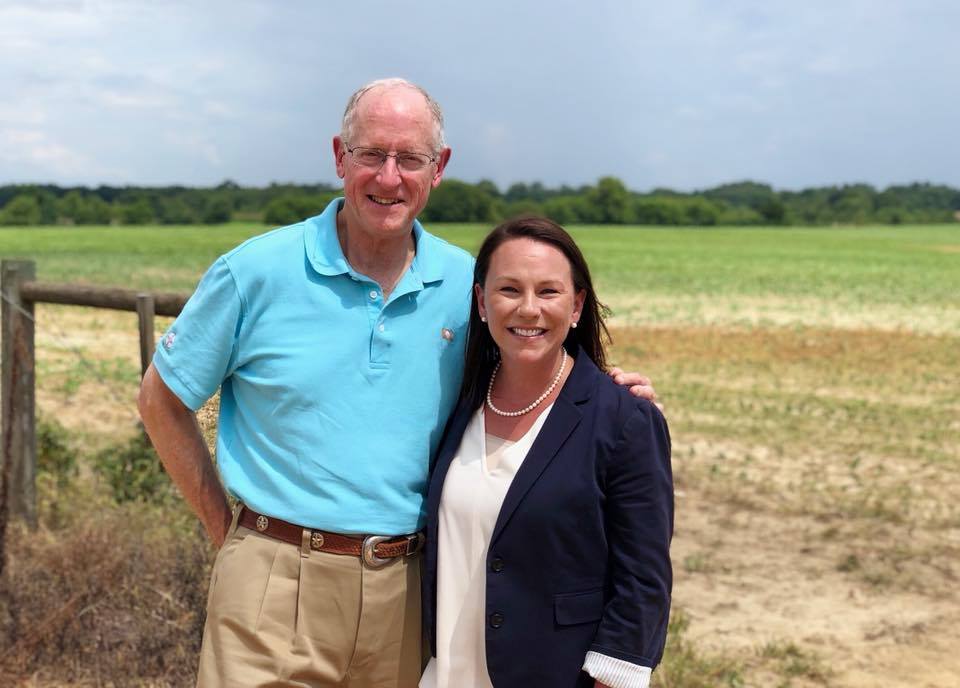
With Congress recently out of session for the Independence Day district work period, I took the opportunity to travel throughout Alabama’s Second District to share an update from Washington and hear directly from the people I represent. I spent time in Clayton, Eufaula, Andalusia, Montgomery, Troy, Slocomb, and Brundidge, just to name a few. Throughout my recent time on the road, one issue that came up frequently was agriculture policy, and I was glad to be able to share a timely update about the lay of the land as it relates to farm policy. During one day of this district work period, I had the privilege of hosting House Agriculture Committee Chairman Mike Conaway (R-TX) and his wife Suzanne for an agriculture tour of Alabama’s Second District. Together we held a large farmers’ roundtable discussion in conjunction with the Alabama Farmers Federation at the Pike County Cattlemen Association in Troy. This was a truly valuable opportunity for the farmers I represent to ask questions and get some answers. During the roundtable, we had conversations about the status of expanding access to rural broadband, possible solutions for our country’s feral hog problem, the importance of strict work requirements for welfare recipients, maintaining a strong crop insurance program, and more. After the roundtable, Chairman Conaway and I visited two family farms in Coffee and Geneva Counties for tours and briefings on their respective crops and operations. In Coffee County, we stopped by a beautiful farm that produces a variety of crops, including peanuts, cotton, and corn. In Geneva County, we visited a cotton farm that just recently planted a crop in early June. Chairman Conaway’s visit comes during a key time for agriculture policy in this country. As you may know, the House and Senate have passed our own different versions of the farm bill, and we will soon go to conference committee to work out the differences. In the House, we passed a conservative farm bill that includes strict work requirements for welfare recipients. I believe it’s important that we offer assistance to the most vulnerable Americans when they truly need it while providing tools to help them improve their circumstances. I have always said that we absolutely must encourage able-bodied individuals to work instead of incentivizing them to remain dependent on the federal government. The House farm bill reflects our conservative position on this issue, and I was proud to support it. Since the Senate is currently bound by a 60-vote threshold to pass legislation, their farm bill is considerably different than our version and doesn’t include conservative work requirements. When we go to conference to work through our differences, the bill that we ultimately pass will likely be a mixture of both versions. As I told the farmers in southeast Alabama, I am eager to continue working alongside my colleagues in Congress to get the work done and send a smart, strong farm bill to the President for his signature. I deeply appreciate Chairman Conaway and his wife Suzanne for making themselves available to the farmers I represent. We were able to have many one-on-one conversations with the hardworking men and women who are impacted by agriculture policy each and every day. I am also grateful to every farmer who attended the roundtable, asked meaningful questions, and hosted us on their properties. As Chairman Conaway said, “The decisions are made by the people who show up.” Thanks to the farmers who showed up, our day of agriculture policy discussion was very successful. I will continue to work alongside the Chairman and my colleagues to deliver agriculture policy that gives fair treatment to our Alabama commodities while making the farmers’ work easier, not more difficult. At the end of the day, my goal is for our farm bill to enable the farmers I represent to do the work they do best: provide the food and fiber that feeds our state, our country, and the world. ••• Martha Roby represents Alabama’s Second Congressional District. She lives in Montgomery, Alabama, with her husband Riley and their two children.
Bradley Byrne: Supporting Alabama’s number one industry
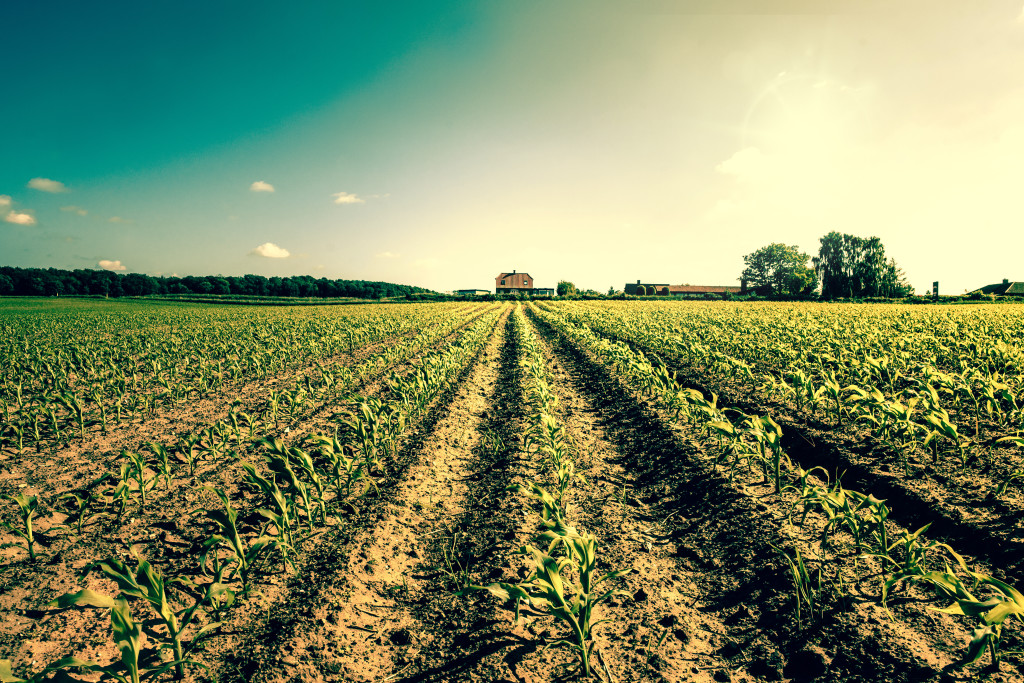
Agriculture is our country’s oldest industry. Since the beginning, America’s farmers have worked the land and sustained our communities. Today, agriculture is the top industry in rural America, and it remains the number one industry in Alabama. As our manufacturing industry continues to grow, I have made a commitment to never forget about the backbone of Alabama’s economy: our hardworking farmers who help feed America. Farming, forestry, livestock and crop production represent more than $70 billion in annual economic output, so it remains imperative that we reinforce programs that sustain and support the agriculture industry. Since being elected to Congress, I have always worked to be a steadfast advocate for agriculture and forestry. In fact, one of the first major votes I took in office was in favor of the 2014 Farm Bill. Four years later, I am proud that we could pass H.R. 2, the Agriculture and Nutrition Act, also known as the 2018 Farm Bill. The Farm Bill supports our nation’s farmers and foresters by reauthorizing farm programs and directing the nation’s agricultural policy for the next five years. Among the many important provisions, the bill includes support for Alabama’s cotton and peanut farmers and maintains access to crop insurance. This legislation also improves existing programs to maximize efficiency, reduces waste, and maintains fiscally responsible stewardship of taxpayer dollars. Very important to me, the Farm Bill establishes substantive work requirements for work-capable adults in order to receive SNAP benefits, commonly known as food stamps. It is important to note that the 2018 Farm Bill does not cut SNAP benefits. Rather, this provision puts more resources toward helping able-bodied adults find jobs and get back to work. In this economy, there is no excuse for capable Americans to not seek out employment. By encouraging Americans to find and retain jobs, we ultimately lift people out of poverty, strengthen the overall economy, and help save taxpayer money. Another significant issue facing our rural communities is a lack of broadband access. The Farm Bill authorizes substantial annual funding for rural broadband and requires the Department of Agriculture to establish forward-looking broadband standards. Finally, this bill helps equip and train the next generation of farmers. The bill enhances access to crop insurance and establishes a scholarship program at 1890 Land Grant Institutions designed to assist students interested in agriculture careers. Many family farms transcend generations, and it is critical that we provide support for up-and-coming farmers to ensure they have the resources they need. Each year, I travel across Southwest Alabama on my annual “Ag Matters” tour. This tour gives me the chance to visit family farms and forest land throughout Southwest Alabama and learn more about our state’s top industry. Ultimately, the “Ag Matters” Tour helps me better understand and appreciate the unique challenges facing our local farmers and foresters. Farming is unlike most other industries and dependent on so many external factors, like weather, that are outside the control of the farmers. It is important farmers have the certainty they need to provide the American people with a safe and reliable food source. As I travel to these family farms and speak with those who work the land, it never fails that the Farm Bill is one of the most talked about issues. This legislation truly has a huge impact on our family farms. Our farmers and foresters are good stewards of the land, and I am pleased the House could pass this important legislation to ensure that our family farms and rural communities have the resources they need to keep up with the challenges of today. • • • Bradley Byrne is a member of U.S. Congress representing Alabama’s 1st Congressional District.
Twinkle Andress Cavanaugh: We have a lot to be thankful for in Alabama

This is always one of my favorite weeks of the year. As we gather to give thanks for and with our loved ones, 396 years since the first Thanksgiving, this week also marks the 62nd annual National Farm-City Week. It is only fitting that we celebrate both of these occasions at the same time. After all, the early settlers came together to rejoice over a successful harvest that would sustain their colony. The Thanksgiving experience certainly has changed over the years, but Farm-City week gets us back to our traditional roots. We can sometimes lose sight of this in modern times, but farmers work diligently year-round to put food on our tables. We owe them a tremendous debt of gratitude. Without them, we could not enjoy our American way of life. For some context, my brother and I were “the city cousins” growing up. Our grandparents on both sides of the family were farmers; my dad’s parents were poultry farmers (really they called themselves “chicken farmers” back then) in Crenshaw County, and my mom’s parents grew soybeans, cotton, and peanuts and had a small herd of cattle near the line between Pike County and Bullock County. We would spend our time at one of the two farms during the summer, on weekends, and for holidays. However, unlike our cousins, we lived in the city because my parents moved to town so they could both teach school. While we were fortunate enough to experience life both on and off the farm, most families only know one of the two lifestyles. That’s why since 1955, this week has been designated as National Farm-City Week. It is the time of year when we focus on increasing understanding between people on and off the farm. You really do not know what it’s like to be in someone else’s shoes until you have walked in them. To that end, the Alabama Farm-City Committee does a tremendous job throughout the year providing educational programs and first-hand experiences to bridge the gap and increase understanding. Even with these differences between farm and city life, rural and urban communities rely heavily on each other for their livelihood. On one hand, farmers work diligently to produce high-quality food, fiber, and forest products for everyone to enjoy. Getting these products from farms to homes across the state, country, and world requires cooperation with people across many industries and walks of life. There are manufacturing and distribution aspects of agriculture, too. Grocers, truck drivers, factory workers, computer scientists, bankers, veterinarians, chemists, salesmen, and various others all play vital roles in getting agriculture products from the farm into households worldwide. The increased understanding that stems from Farm-City programs leads to better cooperation and a stronger economy. This is a boon for families across our great state. Overall, the positive effect that agriculture has on Alabama year-round is truly unparalleled. While the most direct impact is reflected in this year’s Farm-City Week theme, ‘Agriculture: Food for Life,’ there are many lesser known “ag facts” that I would like to share. For instance, farmland covers approximately a quarter of our state and forestland covers two-thirds. This provides a significant benefit when it comes to ecosystem services. Second, Alabama is home to around 43,000 farms, most of which are family owned and operated. The influence goes way beyond these families, as nearly 600,000 Alabama jobs are dependent on agriculture. Between agriculture, forestry, and related industries in Alabama, the annual economic impact is over seventy billion dollars. This does not even include the social benefits of agriculture in our state. Alabama farmers are pillars of their local communities who are giving of their time, talent, and resources. They practice a core belief of mine in all of their work: doing more with less. From my personal experience, life on the farm builds character. The scorching-hot summers I spent working in my grandparents’ chicken houses, my shoes caked with chicken litter as I bustled about trying to keep the chickens from killing each other, helped teach me the virtues of hard-work. This has stuck with me throughout my life, and I am forever grateful for my time on the farm. Which brings us back to Thanksgiving. Let’s challenge ourselves this year. We have so many things to be thankful for in Alabama. But all we see in the news is negative. Let’s count God’s blessings and highlight the things that we love about our state. Most importantly, we still live in a state of God-fearing people. We are also blessed to have an abundance of natural resources in Alabama. We have the most navigable waterways in the country, allowing goods to flow in and out of the state. We have a huge supply of coal that provides jobs for so many families and helps keep electricity rates low for everyone. Our beautiful land and bodies of water make our state a premier destination for hunting and fishing. Alabama is also blessed to have tremendous farmland, ranging from the dark fertile soil in the Black Belt to the bountiful Tennessee Valley. The unemployment rate just hit an all-time low, and we are moving in the right direction with workforce development. Our manufacturing sector is thriving, with new companies making Alabama home left and right. And so, so much more. We are truly blessed, and I am proud to call Alabama home. Happy Thanksgiving and happy Farm-City Week! Our state’s great farmers work hard so that we can focus on our families and enjoy cherished traditions this Thanksgiving Day. So, if you see a farmer during the holiday season, be sure to thank them. This week and throughout the year, we should be grateful for everything they do. When you are saying your prayers, please ask God to continue blessing our farmers and our great state. ••• Twinkle Andress Cavanaugh is the President of the Alabama Public Service Commission. Opinions expressed do not represent the position of the Public Service Commission or its other commissioners.
Bradley Byrne: Agriculture is still number one

Last week, we received some really positive news about the growth of the manufacturing industry in our area. Airbus announced plans to add an additional assembly line at their facility in Mobile, and steelmaker SSAB revealed that they will be moving their national headquarters from Illinois to Mobile. Both of these announcements are a testament to our area’s booming manufacturing industry, and I am very proud of the first-class workforce that helps make these advancements possible. Manufacturing is certainly on the rise. That said, many are surprised to learn that agriculture remains the top overall industry in Alabama. In fact, agriculture and forestry related industries account for over 580,000 jobs in Alabama and have an economic impact of over $70 billion. According to the Alabama Cooperative Extension System, there are 3,816 farms in Alabama’s First Congressional District and over 3.6 million acres of timberland. In an effort to highlight the key role of agriculture in our area, I headed out last week on my annual “Ag Matters” Tour to visit with farmers and landowners across Southwest Alabama. My tour this year included stops in Grand Bay, Atmore, Frisco City, Summerdale, Chatom, Grove Hill, and Monroeville. The “Ag Matters” Tour helps me better understand and appreciate the unique challenges facing our local farmers and foresters. Unlike other industries, there are so many factors outside the control of the farmers that can have a real impact on their bottomline. For example, at Mr. Preston Webb’s farm outside Grove Hill, I was able to see firsthand how feral hogs are causing very serious damage to his tree farm. We visited with representatives from the Alabama Forestry Commission to discuss efforts they make to mitigate the impact of feral hogs. In Baldwin County, I visited the Summerdale Peanut Company, which is a peanut buying point operated by Joe Parker. Joe is currently the president of the National Peanut Buying Points Association, and he showed me how peanuts are weighed, graded, and sorted. Agriculture and forestry’s impact are not limited to the farms and forests. We visited the Georgia Pacific Alabama River Cellulose mill near Monroeville, which supports more than 400 jobs. I was able to see the mill in operation and learn how they process over 4.5 million tons of wood a year. Since being elected to Congress, I have always worked to be a steadfast advocate for agriculture and forestry. One of the first major votes I took in office was in favor of the 2014 Farm Bill. The Farm Bill is the bill that sets policy and authorizes spending for our nation’s agriculture programs. The Farm Bill is set to expire next year, so I look forward to again working toward a Farm Bill that benefits Alabama’s farmers. I am also a co-sponsor of the Resilient Federal Forests Act. This commonsense bill would allow the transfer of emergency funds to pay for wildfire suppression, simplify environmental process requirements, and reduce the cost of implementing forest management projects. It would be a big help to Alabama’s forestry industry. Getting rid of unnecessary and costly regulations is another way I have stood up for our farmers. For example, I voted to rescind the flawed Waters of the U.S. rule that could have expanded EPA oversight to something as small as a puddle on a family farm. I’ve also worked with our farmers to make sure the Endangered Species Act isn’t resulting in undue burdens on our farmers and landowners without any scientific benefit. So, as our manufacturing industry continues to grow, I pledge to never forget about the backbone of Alabama’s economy: our hardworking farmers who help feed America. • • • Bradley Byrne is a member of U.S. Congress representing Alabama’s 1st Congressional District.
Donald Trump’s food stamp cuts face hard sell in Congress

President Donald Trump‘s proposal to slash food stamps by a third will be a hard sell in Congress, even as Republicans have tried repeatedly to scale back the program’s $70 billion annual cost. Democrats will oppose any changes to the program, which is designed as a temporary safety net for Americans who find themselves unable to adequately feed themselves or their families. Many Republicans, too, have been wary to overhaul food stamps, even as participation has more than doubled. Trump’s proposal could have a disproportionate effect on Republican-leaning states – seven of the 10 states with the highest food stamp participation supported Trump. Republicans are still eying cuts to the program, but none as large as what Trump has proposed. — WHAT TRUMP IS PROPOSING Known as the Supplemental Nutrition Assistance Program, or SNAP, the program now serves 44 million people and cost $70 billion last year. The program more than doubled in cost during the recession, and after some eligibility rules were expanded. The cost has stayed higher even as the economy has recovered, though it has slowly decreased annually. Trump’s proposed budget would save $191 billion over 10 years by shifting some of the cost to states, targeting the benefits to the poorest people, increasing work requirements and limiting some eligibility. It would also allow states to determine the level of SNAP benefits they provide. States now administer SNAP with federal money, but would have to come up with an average of 10 percent of the cost by 2020 and 25 percent by 2023. Mick Mulvaney, Trump’s budget director, said shifting costs to states would give them “a little bit of skin the game” and incentivize them to improve the programs. — WHY IT’S A LONG SHOT Congress is unlikely to approve such deep cuts in the program, since it affects constituents so broadly. And farm-state lawmakers who have jurisdiction over SNAP have generally sought to preserve it, as food stamps help them win urban Democratic votes for the massive farm bill that Congress passes every five years or so. “It’s important to note, #SNAP plays a crucial role in protecting our most vulnerable citizens who’ve fallen on tough times,” tweeted House Agriculture Chairman Mike Conaway, R-Texas, after the budget was released. Still, Conaway and Senate Agriculture Chairman Pat Roberts, R-Kan., have indicated they will support some sort of SNAP overhaul in the next farm bill, due next year. “We need to take a look at our nutrition assistance programs to ensure that they are helping the most vulnerable in our society,” Conaway and Roberts said in a joint statement on the budget. It won’t be easy. The bill would need 60 votes in the Senate, and Democrats have strongly opposed any changes to the program. Republican leaders insisted on food stamp cuts in the 2014 farm bill, and the House passed legislation that would have strengthened work requirements and cut 5 percent. After negotiations with the Senate, the cut was reduced to an almost-negligible 1 percent that only affected a handful of states. Similarly, in the mid-1990s, some in the GOP pushed for a major food stamp overhaul as part of welfare reform, and some work requirements were added. But the program stayed largely intact. — WHOM THE CUTS WOULD AFFECT While a majority of SNAP recipients are in urban areas, there has been an increase in rural areas. Of the 10 states that have the most food stamp recipients, seven went Republican in the 2016 presidential election – Florida, Georgia, Michigan, North Carolina, Ohio, Pennsylvania and Texas. In a list compiled by the liberal-leaning Center on Budget and Policy Priorities, three states among those that have the highest percentage of recipients are strongly Republican – Louisiana, Mississippi and West Virginia. One of Trump’s proposals would limit government waivers that have allowed able-bodied adults who don’t have dependents to receive food stamps indefinitely without finding work. The Trump administration says this would help move people off the rolls. “If you’re on food stamps, and you’re able-bodied, we need you to go to work,” Mulvaney said. Lucy Melcher of the anti-hunger group Share Our Strength says some people aren’t able to find work in their areas, and have no access to job training. She says the cuts could be “devastating.” The proposed cuts would “just exacerbate poverty for people who are already trying to work their way out of it,” Melcher said. “I don’t think there’s a person living in poverty today who wouldn’t be affected by this budget.” Republished with permission of The Associated Press.
Robert Aderholt applauds new trade emphasis in USDA reorganization

The Trump Administration is rolling out an extensive reorganization of U.S. Department of Agriculture (USDA), the first since 1994, that will streamline the department, create a new undersecretary position, and place new emphasis on trade and its important within the global economy. Recently confirmed Agriculture Secretary Sonny Perdue made the announcement Thursday. “Our plan to establish an undersecretary for trade fits right in line with my goal to be American agriculture’s unapologetic advocate and chief salesman around the world. By working side by side with our U.S. Trade Representative and Secretary of Commerce Wilbur Ross, the USDA undersecretary for trade will ensure that American producers are well equipped to sell their products and feed the world,” Perdue said in a press release. Alabama 4th District U.S. Congressman Robert Aderholt, Chairman of the House Appropriations Agriculture Subcommittee, applauded the USDA’s announcement. “America’s strength lay not just in our ability to protect our allies but also to feed them. I have long said that Americas strength might lay not just in our military capabilities but in the fact that we have one of the strongest agricultural economies in the world,” Aderholt said in a statement. “Realizing the strength of our farmers comes through trade. Quite frankly, our farmers and ranchers can compete with any country in the world if we are given a level playing field. An Under Secretary of Trade whose whole mission is to ensure that we have open markets, to provide proteins, and produce, will only make our rural economy that much stronger.” The creation of the undersecretary position was mandated in the 2014 Farm Bill, but ignored by the Obama Administration. Aderholt says he’s encouraged by the Trump Administration’s decision to make the position a reality. “I am encouraged that one of Secretary Perdue’s first acts is to establish this new Under Secretary,” Aderholt added. “This position will raise the profile of the American economy’s agricultural sector and focus on promoting American goods overseas.” The USDA reorganization will also elevate the Rural Development agencies to report directly to the secretary of agriculture in recognition of the need to help promote rural prosperity. “The economic health of small towns across America is crucial to the future of the agriculture economy. It is my commitment to always argue for the needs of rural America, which is why we are elevating Rural Development within USDA,” said Perdue. “No doubt, the opportunity we have here at the USDA in rural development is unmatched.” Watch Perdue’s announcement below:

